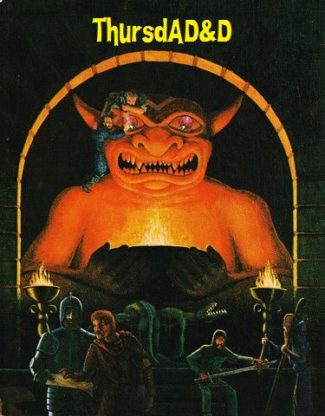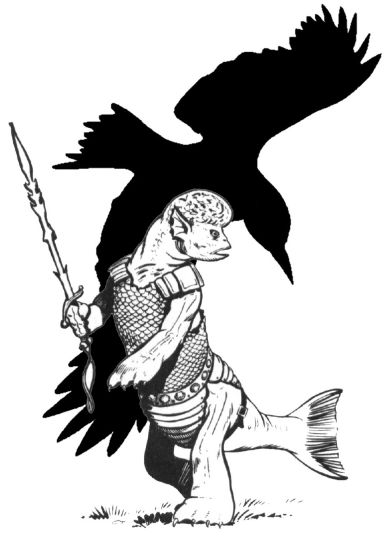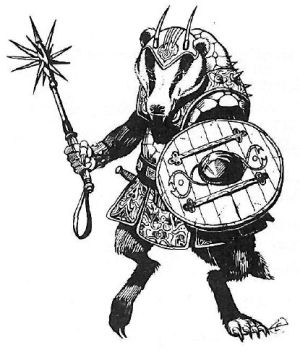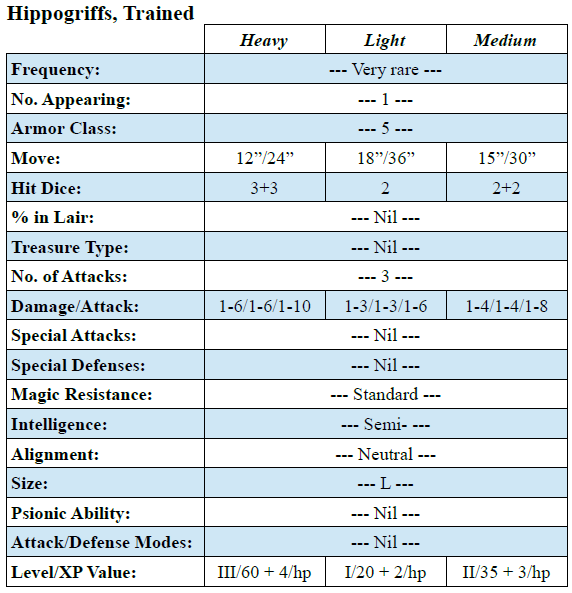ThursdAD&D: Bloodoak and Other Woods
The Skyrealms AD&D campaign resumes this coming Sunday with the heroes continuing their exploration of the so-called “haunted house” on the outskirts of Saltmarsh. One of the inspirations for the campaign is The Edge Chronicles by Paul Stewart and Chris Riddell. I recently started re-reading Beyond the Deepwoods, the first of the books in the Twig Saga.

In Beyond the Deepwoods, readers are introduced to the Deepwoods, a place of magic and danger. Unusual trees grow in the Deepwoods.
Scentwood: This wood burns with a soporific fragrance that sends “those who breathed it drifting into dream-filled sleep”. A creature that breathes air tinged with scentwood for 1 turn must make a saving throw versus poison or fall asleep for 1d4+2 hours. The creature can be awakened before this time by rough handling, loud noises, or damage, but he is treated as moderately intoxicated if less than half the time has passed, or slightly intoxicated otherwise. See page 82, Dungeon Masters Guide for the specifics. If the affected creature sleeps for the entire duration, he awakens refreshed as if he had rested for a full day. Minimum Size of Log: 2 lbs. Cost: 5 gold pieces per pound.
Lullabee: When burned, this wood, silvery-turquoise in color, sings “strange mournful songs” that are widely viewed as an acquired taste. A creature that listens to the singing wood for 1 turn must make a saving throw versus spells after falling asleep. If the saving throw fails, the creature’s dreams are sad and disturbing. The creature loses 1d4 points of wisdom, which are restored at a rate of 1 point per hour after waking up. If the saving throw succeeds, the creature is mentally fortified, enjoying a +1 bonus to saving throws against enchantment/charm and fear effects for 1d4 hours after waking up. Minimum Size of Log: 2 lbs. Cost: 15 gold pieces per pound.
Lufwood: This wood is the most popular for home fires. It burns softly and well, producing a restful purple glow. This glow acts as a protection from evil in a 5-foot radius per burning log. A log burns for 1 hour. Minimum Size of Log: 3 lbs. Cost: 25 gold pieces per pound.
Bloodoak: Bloodoak is the most bouyant of woods, and it’s used in the construction of floatboats and skyships. Bloodoak burns brightly and hotly, moreso than other woods. It also wails and screams while burning. Bloodoaks are dangerous, and invariably grow alongside the predatory tarry-vine. Cost: 1 gold piece per pound.
At the top of the trunks of these huge flesh-eating Deepwoods trees are a ring of enormous teeth which ensures that hapless prey, captured for it by the parasitic lassoo-like tarry-vine, can never escape.
Bloodoak
Frequency: Rare
No. Appearing: 1
Armor Class: 3 (5 for tarry-vine)
Move: 0″ (12″ for tarry-vine)
Hit Dice: 16+16 (4+4 for tarry-vine)
% in Lair: Nil
Treasure Type: Incidental
No. of Attacks: 1 (4 for tarry-vine)
Damage/Attack: 5-20 (1-4 for tarry-vine)
Special Attacks: See below
Special Defenses: See below
Magic Resistance: Standard
Intelligence: Semi-
Alignment: Neutral evil
Size: L (20+ feet tall)
Psionic Ability: Nil
Attack/Defense Modes: Nil
Level/XP Value: IX/5,250 + 20/hp (Tarry-Vine: IV/205 + 5/hp)
Climate/Terrain: Any non-tropical/any forest
Organization: Solitary
Activity Cycle: Nocturnal
Diet: Carnivore
Morale: Fearless (19)
The bloodoak cannot be easily mistaken for a normal tree. Great, scab-like growths cover its thick, nearly limbless trunk. Its thick roots can be seen pulsing slowly, pumping bloodsap. Ropy, barbed tarry-vines grow riot around the bloodoak’s trunk and roots. These vines snake and strike, and account for the characteristic “deathstillness” around the bloodoak, for it is a careless or very hungry animal that gets close enough to the tree to become a meal. Closer to the bloodoak, depending on wind conditions, the “underscent” of rotting carcasses and blood might be detected. Atop the bloodoak’s trunk is a gaping mouth ringed by huge, jagged teeth.
In truth, the bloodoak is two creatures: the bloodoak itself and its symbiotic tarry-vine. The tarry-vine attacks with barbed, lithe branches, striking in any direction out to 12″ around the bloodoak. A tarry-vine has 13-20 attack vines, each one treated as AC 5 and requiring 4 points of damage from an edged weapon to sever. Damage inflicted to the attack vines does not affect the tarry-vine’s body, which has 4+4 Hit Dice. When an attack vine hits, it inflicts 1-4 points of damage and wraps tight around a limb or the neck. The attack vine inflicts damage automatically each round it is attached. Furthermore, it lifts the victim into the air to drop the victim into the bloodoak’s gaping maw. This takes 1-4 rounds.
The bloodoak’s maw grinds its food, inflicting 5-20 points of damage each round with no need to make a “to-hit” roll. It is almost impossible to climb out of the bloodoak’s throat due to the numerous, downward slanting fangs. A thief (or character with climb walls ability) might succeed, but with half the normal chance. The inner armor class of the bloodoak is 8. Bludgeoning weapons are ineffective against the bloodoak, whether its interior or exterior. Nonmagical piercing weapons also cannot harm a bloodoak.
Bloodoaks hate fire, but they are not particularly vulnerable to it. Tarry-vines take +1 point of damage per damage die from fire attacks. Cold spells have their normal effect, and also slow the bloodoak and/or tarry-vine for 1-4 rounds. Bloodoaks and tarry-vines are immune to enchantment/charm and magic missile spells.





